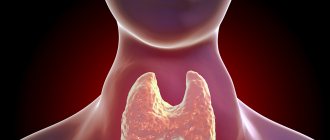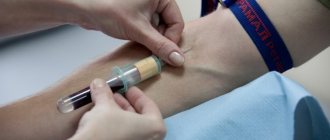Symptoms of altitude sickness
The mild form of the disease usually includes headache, nausea, breathing problems, palpitations, weakness and decreased activity. These symptoms usually disappear after a few days if the person remains at the same altitude. A more serious condition occurs at an altitude of 3000 meters above sea level or more. In addition to the already listed symptoms of the disease, there is a decrease or loss of appetite and insomnia, interrupted sleep due to periodic breathing (when a person breathes normally for some time, and then his breathing stops for 10-15 seconds, as a result of which he wakes up). Severe breathing difficulties, vomiting, frequent coughing, loss of coordination and loss of consciousness are some of the most serious symptoms and require immediate descent or placement of the patient in a portable pressure chamber. In the pressure chamber, conditions corresponding to increased atmospheric pressure are artificially created, and they give the same effect as a decrease in altitude.
What you can do The best way to prevent altitude sickness is to gradually gain altitude, that is, reaching the designated point over several days. If this is not possible, for example, you have a short flight from sea level to an altitude of 3000 meters or more, you can take medications. You should consult a doctor who will prescribe you a drug, which you should start taking 2 or 3 days before your planned trip. At altitude, it is important to try to preserve the maximum amount of fluid in the body, because... Dehydration contributes to the development of mountain sickness. It must be taken into account that when breathing in the cold high above sea level, as well as through evaporation through sweat, a large amount of liquid is lost, especially during such active activities as skiing and trekking. If you are planning on taking part in a trip with a lot of elevation change in a short time, discuss possible concerns with your doctor.
Treatment
Switching the sick person V. b. breathing oxygen or a mixture of oxygen with 3-5% carbon dioxide is the only reliable method of treating this disease. In mild cases, oxygen therapy leads to rapid and complete restoration of health. It should be borne in mind that sometimes giving oxygen leads to a short-term but quickly passing deterioration in the general condition, i.e. to the development of the so-called. paradoxical effect of oxygen. This phenomenon is based on a reflex mechanism, the trigger point of which is a change in the nature of impulses from the vascular reflexogenic zones arriving at the vasomotor and respiratory centers. In severe forms of V. b., when the patient is unconscious for a long time, or in cases where loss of consciousness occurs repeatedly and is accompanied by seizures and vomiting (such cases are described with the development of V. b. in flights), in addition to oxygen therapy, it is necessary drug treatment. To prevent and eliminate post-hypoxic cerebral edema, it is recommended to use drugs that have a dehydration effect: mannitol, dextran, glucose [Busby (D. E. Busby, 1968)].
Preventative measures for mountain sickness
Who is at risk? There is no way to predict whether a person will get altitude sickness or not. Surprisingly, age, lack of physical fitness and the presence of various diseases such as asthma do not affect the incidence of altitude sickness. And if you have had this disease before, this does not mean that you will definitely get it again (although you may be considered more susceptible to altitude sickness). Accordingly, there is no guarantee that if you have never had altitude sickness before, you will not develop it in the future.
Etiology and pathogenesis
The works of Ber (P. Bert, 1878) and I.M. Sechenov (1879) were the first to establish that the cause of altitude sickness is acute oxygen starvation. Behr noted that with the development of V. b. in animals, disturbances in the activity of c are of leading importance. And. pp., its high sensitivity to hypoxemia. The development of oxygen starvation can be caused by a decrease in barometric pressure with an inevitable drop in pO2 in the air or a decrease in the oxygen content in the air or in the artificial gas environment of hermetically sealed rooms. The first situation may arise during high-altitude flights in aircraft with open cabins or after the seal of closed cabins has been breached; the second is due to the failure of systems that regenerate air in pressurized cabins and rooms.
Signs of high altitude pulmonary edema
The first signs of pulmonary edema are:
- Weakness, headache, rapid breathing.
- Later, pallor, blue lips and nails, restlessness, and wheezing are heard during breathing.
- A pinkish foam may be released from the mouth, which is foamed plasma containing red blood cells.
- If there is no treatment, the terminal phase of pulmonary edema occurs. The pressure drops, breathing becomes shallow and irregular.
The cause of death due to pulmonary edema is asphyxia.
Pathological anatomy
The pathological anatomy of Mountain Sickness is not strictly specific. In organs and tissues, changes are observed that are observed during death from hypoxia of any nature. In acute and subacute forms of G. b. focal degeneration and hemorrhages in the myocardium and other internal organs, congestion and perivascular hemorrhages in the brain, congestive congestion or pulmonary edema with penistohemorrhagic effusion in the alveoli and bronchi are detected. With chronic G. b. additionally, an increase in the right parts of the heart is detected due to their hypertrophy, sometimes in combination with dilatation and concomitant signs of congestive venous congestion of the organs.
Secrets of climbing Elbrus
The highest peak in Europe, Mount Elbrus (the height of the western peak is 5642 m), has been attracting mountain climbers for many years. They are attracted by the relative ease of climbing, excited by high altitudes and attracted by the easy accessibility of transport routes.
When going to Elbrus, beginners often forget that this is a fairly serious peak, the full ascent of which is classified 2A according to the mountaineering gradation. Well, the ascent is radial, on one side only, can be rated as 1B due to the presence of a glacier; the altitude barrier adds complexity. This is what we will talk about today.
Each person has their own level of altitude sickness. Some feel unwell at 1600, others calmly walk at 4000 without prior acclimatization. The Caucasus is generally a complex system that has a very low threshold for altitude sickness. In the Western Caucasus (especially in the Black Sea zone), mountain sickness begins to be felt from around 2000 (two thousand) meters. In the North Caucasus, and in the part called the Central Caucasus, the mountain cover covers from 3000 (three thousand) meters above sea level. Moreover, during the period of primary acclimatization, attacks of mountain sickness can be felt at lower elevations.
What is altitude sickness?
Mountain sickness, or cerebral hypoxia (oxygen starvation of brain cells) is a condition of the body characterized by a specific restructuring of the body at certain altitudes. Due to lack of oxygen, brain cells begin to die, the cardiovascular, respiratory, digestive and nervous systems fail. This condition is accompanied by weakness, dizziness, nausea, vomiting, apathy and... hallucinations.
Handsome Elbrus reveals its secrets. Read on for the secrets of climbing Elbrus
If you are not frightened by such symptoms, then read the continuation of the article.
How to overcome altitude sickness on the slopes of Elbrus
To ensure that participants do not experience discomfort from the effects of altitude during the ascent, the ascent takes place in stages with a gradual increase and decrease in altitude marks. The golden rule is that having gained height during the day, by the evening you should lose at least half of it.
Let's look at how this happens on the ground:
Climbing Elbrus from the north. Groups, as a rule, arrive at the beginning of the trip to the Emmanuel clearing, mark 2500 m. The first acclimatization trip is carried out to the base camp at mark 3800 - a daily altitude gain of 1300 meters. From the base camp you can go down to the German airfield or Paradise Glade (mark 3100 m), or you can go back to Emmanuel Glade (mark 2500 m).
The next step is to gain altitude to the base camp mark (3800 m). And then the next period of acclimatization begins, climb to 5100 m, reset and climb to the top - mark. 5621 m (traditionally, it is customary to climb the eastern peak from the north).
Climbing Elbrus from the South involves radial acclimatization trips to the Chegem waterfalls and the Cheget peak with accommodation in the village of Tyrnauz, and then climbing the Elbrus slope from the Azau clearing with periodic planned reset. The base camp for climbing to the mark of 5642 m (traditionally one climbs from the South to the Western Peak) is set in the range from 3100 to 4100 meters. The southern Elbrus region has a developed infrastructure: cable cars, a chain of hotels. Therefore, most tourists use cable cars and snowcats for acclimatization and ascent. That is why the ascent from the South is “refined” and is more difficult to endure than the ascent from the North on your own feet. The planned differences in the ascent/descent levels of 800 - 1200 meters are observed, but the body gains them sharply, in leaps and bounds, and does not have time to recover.
As a result of acclimatization ascents/descents, the body receives primary acclimatization:
1. with increasing altitude, red blood cells are produced in the blood, which contribute to better oxygen saturation of the blood;
2. with a decrease in altitude, the heart rate slows down, blood pressure normalizes, which tends to increase as one climbs the slope, and as a result, headaches decrease;
ATTENTION!!! On the slope of Elbrus, a pulse of 100 - 140 beats per minute is considered normal (the norm on the plain is 70 - 80 beats per minute. In the first days, the pulse can go off scale over 200 (two hundred), but during acclimatization it gradually decreases to “normal mountain" levels.
The key to proper acclimatization is movement. If you just lie and sunbathe in the sun or ride a snowcat, your body may not adapt to the altitude. If after a couple of days you still have 200 or more beats per minute, you should reset the mark. The second correct condition for acclimatization is speed - you walk in the mountains, not run; It’s better if it’s a medical pace - slow and sad, so the body will more easily get used to changing altitudes.
It will not be superfluous to organize proper nutrition on the mountainside. At altitudes, the acidity of gastric juice decreases, and bile may reflux into the contents of the stomach, resulting in nausea and vomiting. Fatty and fried foods should be excluded. Requires eating in small portions. It is advisable to increase the amount of fiber (heavy carbohydrates), sweets (fast carbohydrates) and protein. You should not experiment too much with water - a large amount of water will increase blood pressure and cause additional headaches. Drink hot tea or compote - they perfectly quench your thirst.
Useful tips for first climbers to Elbrus.
Additional negative factors on the slope:
- low temperatures;
- low humidity;
- wind load;
- solar radiation.
The complex of factors on the slope has a primarily demoralizing effect. And secondly, as a result of a person’s exposure to a negative natural environment while climbing, one can get frostbite and sunburn. Dry mountain air and low temperatures desiccate - you need plenty of hot, sweet drinks (fast carbohydrates help to quickly replenish your strength). Be sure to take sunscreen and lipstick with a high UV factor; two masks will not be superfluous: one with light glasses for the night, the other with dark glasses for the day, after sunrise. Clothes for climbing should be multi-layered, meeting the temperature schedule - it should be easy to take off and put on.
Climbing Elbrus
Following these simple rules during ascent and acclimatization will allow you to get closer to your desired goal. May the WEATHER be with you!
How to prepare yourself for Climbing Elbrus on the plain
Absolutely all climbers will agree that technically climbing Elbrus in the summer (June, July) is not a difficult trek that requires endurance. The best way to build endurance is running. Running workouts pump up the leg muscles, saturate the blood with oxygen, increase metabolism and teach you to work systematically.
The training schedule should be limited to at least 2-4 kilometers of running per day at a leisurely pace. Training should be carried out at least 3 times a week, three weeks before the ascent you can intensify the training process, and a week before the ascent you should stop the load. The body needs rest.
Excellent preparation for mountain hiking, climbing and running
How to get initial high-altitude acclimatization
For those tourists who are very responsible and take preparation for the ascent, they should not neglect the initial high-altitude acclimatization. You can get it even in the foothills of the Caucasus Mountains. I want to share with you my experience of preparing for the ascent. I carry out a system of similar training every spring before the start of a new active season, which includes climbing Elbrus.
Trainings are conducted in the Black Sea region, where the level of mountain sickness is the lowest in the Caucasus.
So, the first stage. February. Two or three trips to Akhun (mountain in Sochi) along different routes: with and without a visit to the Eagle Rocks. The elevation gain is small, only 600 meters, but sufficient for initial acclimatization. As a rule, there is no snow on Akhun, there is a good trail and a measured pace; Alternate drop and gain of altitude - excellent acclimatization. Even the Russian Skyrunning team trains before the decisive race to the main peak of Europe on the slopes of Akhun.
Stage two. March. We increase the load. There is still snow in the mountains of Krasnaya Polyana. Ascent to the Khmelevskie Lakes (Krasnaya Polyana area) and descent in one day. Let's get stuck in the snow. Sometimes we wear snowshoes - we climb 1200 vertical meters in one day.
The maximum elevation point is 1800 m above sea level.
Stage three. April and May. We continue to go to Akhun, get passes to the border zone in the Caucasus and prepare mentally for the season.
Stage four, final. The end of May. The snow has already melted in the mountains, the avalanche danger has passed. The decisive breakthrough. Daily altitude gain is 1800 meters. Climbing to the top of Mount Aibga from its foot. Does the climb figure remind you of anything? Yep, this is the maximum possible altitude gain from the base camp on the slope of Elbrus to its summit.
Mount Aibga is a magnificent springboard and training for climbers to Elbrus
Ale op! So we got physical training and training before the Elbrus slope. All that remains is to transfer our efforts 150 kilometers south to the slope of this remarkable peak in all respects.
This type of training is perfect as the final stage before preparing for climbing Elbrus and is quite comfortably accelerated within 5 days on the territory of the Black Sea zone. You test your physical readiness for increased anaerobic loads and get high-altitude acclimatization in the conditions of the foothills.
Proper acclimatization is the main secret of climbing Elbrus
Medication support when climbing Elbrus
A well-trained body with adequate nutrition is able to independently cope with the stress of climbing. But many experts still recommend not to neglect light medicinal support, including vitamin preparations (vitamin C and multivitamins), which are taken during the period of acclimatization and during the ascent. The most inexpensive and effective is Complevit - 1 tablet 3 times a day (dose used for intense physical activity). Ingredients: microelements, salts, multivitamins.
You can individually choose a natural energy stimulant - eleutherococcus, ginseng tincture... Individually, because these drugs in the same doses have a completely different effect on each person.
More intensive specific (profile) drugs:
Decamevit - protective functions of the body and tonic effect. An excellent tonic for heavy physical activity and sleep disorders. Solves the problem of energy tonics during ascent. Taken in a dose of 1 tablet 2 times a day.
Cyanocobalamin - is involved in the process of hematopoiesis, 1 tablet 2 - 3 times a day.
Panangin - eliminates the deficiency of potassium and magnesium ions during heavy physical activity. Dose: 1 tablet 2 - 3 times a day.
Aminalon (gammalon) - stimulates metabolic processes in the brain. Dose: 1 - 2 tablets 3 - 4 times a day.
Citramon or caffeine - indicated for headaches (taken according to symptoms).
Hypothiazide is a diuretic (take 1/4 tablet according to symptoms - debilitating headache when water-salt balance is disturbed).
Medications on the slopes of Elbrus
It is up to everyone to decide whether or not to take medications. Proper acclimatization on a slope solves many problems of the human body at altitude and does not require additional drug infusions.
Elbrus from the south
Classic ascent with stepwise acclimatization on the slopes of Elbrus and Cheget and ascent to the Western peak of the mountain. The tour is planned with maximum possible comfort for climbing to the top.
Route difficulty: 2A Duration: 10 days
Order number: 003005
FIND OUT DETAILS
Elbrus from the north
A route for brutal mountain climbers and their purposeful companions. Accommodation in tents. The climb takes place in the Himalayan style. On the day of the ascent, the group goes to the eastern peak.
Route difficulty: 2A Duration: 10 days
Order number: 003006
FIND OUT DETAILS
Forecast
Forecast of acute and subacute forms of G. b. with timely treatment and professional measures, it is usually favorable. In case of untimely treatment, acute G. b. severe cases (especially acute high-altitude pulmonary edema) can lead to death from hypoxic coma. With chronic G. b. the prognosis depends on the individual characteristics of the course; in some patients, the ability to work progressively decreases; death usually occurs as a result of hypoxic coma or as a result of cardiac, predominantly right ventricular failure. The general condition and prognosis improve with the evacuation of patients chronically. G. b. to the lowlands.
Prevention
The most effective means of preventing V. b. is the use of oxygen equipment that maintains the normal supply of oxygen to the body. To improve kV stability. b. It is advisable to train in pressure chamber conditions - regular ascents to gradually increasing altitudes from 3000 to 5000 m, as well as in high altitude conditions.
See also Adaptation to altitude, Altitude, Hypoxia.
Bibliography:
Armstrong G. Aviation medicine, trans. from English, M., 1954; Van Leer E. and Stickney K. Hypoxia, trans. from English, M., 1967; Isakov P.K. et al. Theory and practice of aviation medicine, M., 19 71, bibliogr.; Kovalenko E. A. and Chernyakov I. N. Tissue oxygen under extreme flight factors, M., 1972, bibliogr.; Korovin A. M. Paroxysmal disorders of consciousness, L., 1973, bibliogr.; Kotovsky E. F. and Shimkevich L. L. Functional morphology under extreme influences, M., 19 71, bibliogr.; Fundamentals of space biology and medicine, ed. O. G. Gazenko and M. Calvin, vol. 1-3, M., 19 75, bibliogr.; Sechenov I.M. On oxygen tension in the pulmonary air under different conditions, Doctor, vol. 1, no. 43, p. 703, 1880; Bert P. La pression barometrique, P., 1878; Busby DE Space clinical medicine, Dordrecht, 1968; Textbook of aviation phvsioloorv, ed. bv JA Gillies, Oxford, 1965.
V. B. Malkin.
Complications
Both acute severe mountain sickness and chronic mountain sickness b. may be complicated by acute vascular and heart failure, and at altitudes above 5000 m - hypoxic coma. As a result of acute high-altitude pulmonary edema, the development of bronchiolitis and acute pneumonia is possible. The most common complication hron. G. b.—circulatory disorders due to right ventricular heart failure. In some patients the course is chronic. G. b. already in the early stages it is complicated by the addition of hron, bronchitis or hron, pneumonia, which aggravates the progression of hypertension of the pulmonary circulation.











